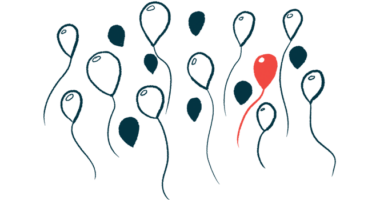
What is AADC deficiency?
Aromatic l-amino acid decarboxylase (AADC) deficiency is a genetic disorder that affects the nervous system, hindering communication between nerve cells. With symptom onset typically in the first year of life, the condition causes developmental delays and movement and behavior problems, as well as issues with involuntary bodily processes. Most patients will require lifelong care.
Described for the first time in 1990, AADC deficiency is extremely rare, with fewer than 350 cases ever reported globally. It is thought to be more common in Asian populations, particularly in Taiwan, where the disease is estimated to affect 1 per 32,000 live newborns. Estimated incidence in the U.S. is roughly 1 to 3 per 100,000 live newborns, and in the European Union, 1 in 116,000. Still, the disease is likely underdiagnosed or misdiagnosed due both to a lack of awareness of AADC deficiency and its similarities with other conditions.
Due to its rarity, the life expectancy of people with AADC deficiency remains largely unclear, but some studies have reported an increased risk of death in the first decade of life.
Causes
AADC deficiency is caused by mutations in both copies of the DDC gene, which carries the instructions necessary to make the aromatic l-amino acid decarboxylase (AADC) enzyme.
This enzyme is vital for the production of several neurotransmitters, or molecules that nerve cells use to communicate with each other and with the rest of the body. These include serotonin, dopamine, and the dopamine-derived neurotransmitters norepinephrine and epinephrine, which are key for normal nervous system development and/or function.
Mutations in the DDC gene result in too little AADC enzyme and/or an enzyme that doesn’t work properly, ultimately leading to abnormally low production of these neurotransmitters and subsequent neurological defects.
Symptoms
AADC deficiency can cause a wide range of symptoms that may vary substantially from person to person. In most cases, symptoms are severe and appear within the first year of life.
Children with AADC deficiency usually do not hit developmental milestones such as sitting up, crawling, walking, or talking at normal ages, or may never hit such milestones. Most patients also experience reduced muscle tone and oculogyric crises, in which a person’s gaze becomes fixed upward due to spasms in the muscles controlling the eyeballs.
Patients also may experience other movement disorders, such as diminished movement or uncontrolled muscle contractions.
AADC deficiency often is linked with problems in the autonomic nervous system, which controls unconscious bodily functions such as heartbeat, body temperature, and gastrointestinal function. Autonomic dysfunction can lead to symptoms like excessive sweating, drooping eyelids, and low blood pressure.
Other disease symptoms can also include fatigue, sleep problems, seizures, intellectual disability, and mental health problems and mood disorders such as anxiety and depression.
Diagnosis
There are three main tests for diagnosing AADC deficiency. One is a genetic test of a blood sample to look for disease-causing mutations in the DDC gene. A blood sample also can be used to determine whether AADC enzyme activity is lower than normal.
Another test involves measuring the levels of neurotransmitter-related molecules in the cerebrospinal fluid (CSF) — the liquid surrounding the brain and spinal cord. This test looks for a specific pattern of abnormal levels of molecules associated with AADC deficiency. It also can help distinguish AADC deficiency from other conditions that also impair neurotransmitter production through different mechanisms.
Genetic testing should be performed for all patients suspected of having this disease, and at least two of the three tests should support AADC deficiency to have a confirmed diagnosis.
Treatment
There is no cure for AADC deficiency, but there are treatments available to help alleviate symptoms. Supplements of vitamin B6 (pyridoxine), which help the AADC enzyme to function, are often used as a first-line treatment.
These supplements typically are given in combination with medications used off-label for the condition, meaning these drugs are approved for treating other disease. Medications that mimic the function of dopamine, called dopamine receptor agonists, and/or therapies that prevent the breakdown of dopamine and serotonin — known as monoamine oxidase inhibitors — may help patients with AADC deficiency.
Among experimental therapies being explored for AADC deficiency, the most promising strategy to date is gene therapy, which generally works by delivering a healthy copy of the affected gene to patients’ cells. Such a therapy would aim to increase the levels of working AADC enzyme, ultimately slowing or preventing disease progression.
In 2022, one such gene therapy, PTC Therapeutics’ Upstaza (eladocagene exuparvovec), became the first disease-modifying treatment to be approved for AADC deficiency in the European Union and in the U.K. The company also plans to seek regulatory approval in the U.S.
People with AADC deficiency also can benefit from non-drug treatments such as physiotherapy, in which trained specialists work with patients to improve their physical functioning. Occupational therapy, which seeks to equip patients with ways to navigate the world while living with a medical condition, also can benefit those with the disease. For some patients, speech therapy also may be beneficial.
AADC News is strictly a news and information website about the disease. It does not provide medical advice, diagnosis, or treatment. This content is not intended to be a substitute for professional medical advice, diagnosis, or treatment. Always seek the advice of your physician or other qualified healthcare providers with any questions you may have regarding a medical condition. Never disregard professional medical advice or delay in seeking it because of something you have read on this website.
Recent Posts
- AI model popEVE predicts likelihood of harm from ultra-rare DNA mutations
- Our holiday trip is a symbol of our daughter’s journey after gene therapy
- NORD adds 7 sites in 5 states as Rare Disease Centers of Excellence
- Simple strategies and new exercises help to correct mouth breathing
- New AI tool for doctors’ notes may save patients years to be diagnosed
 Fact-checked by
Fact-checked by 


